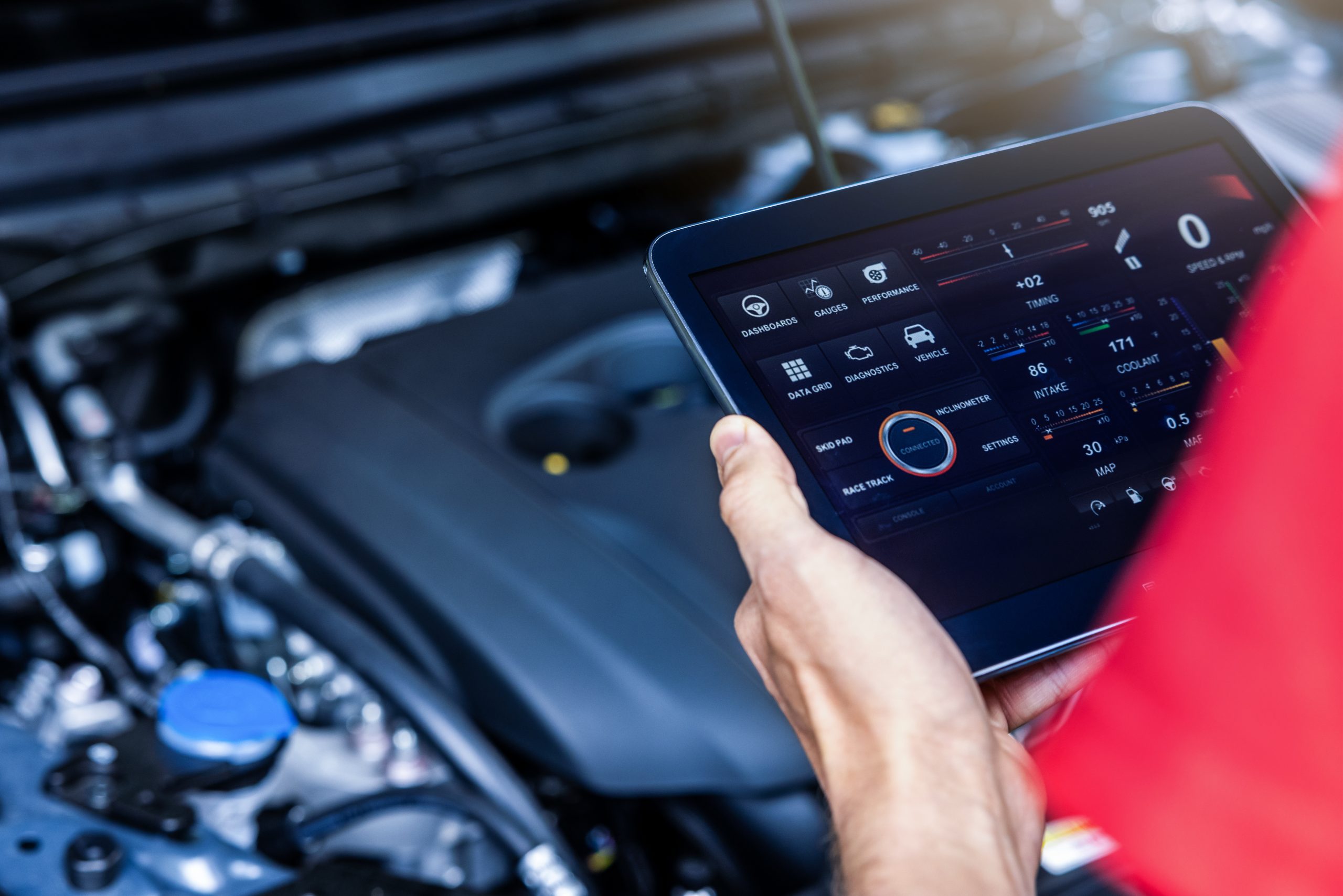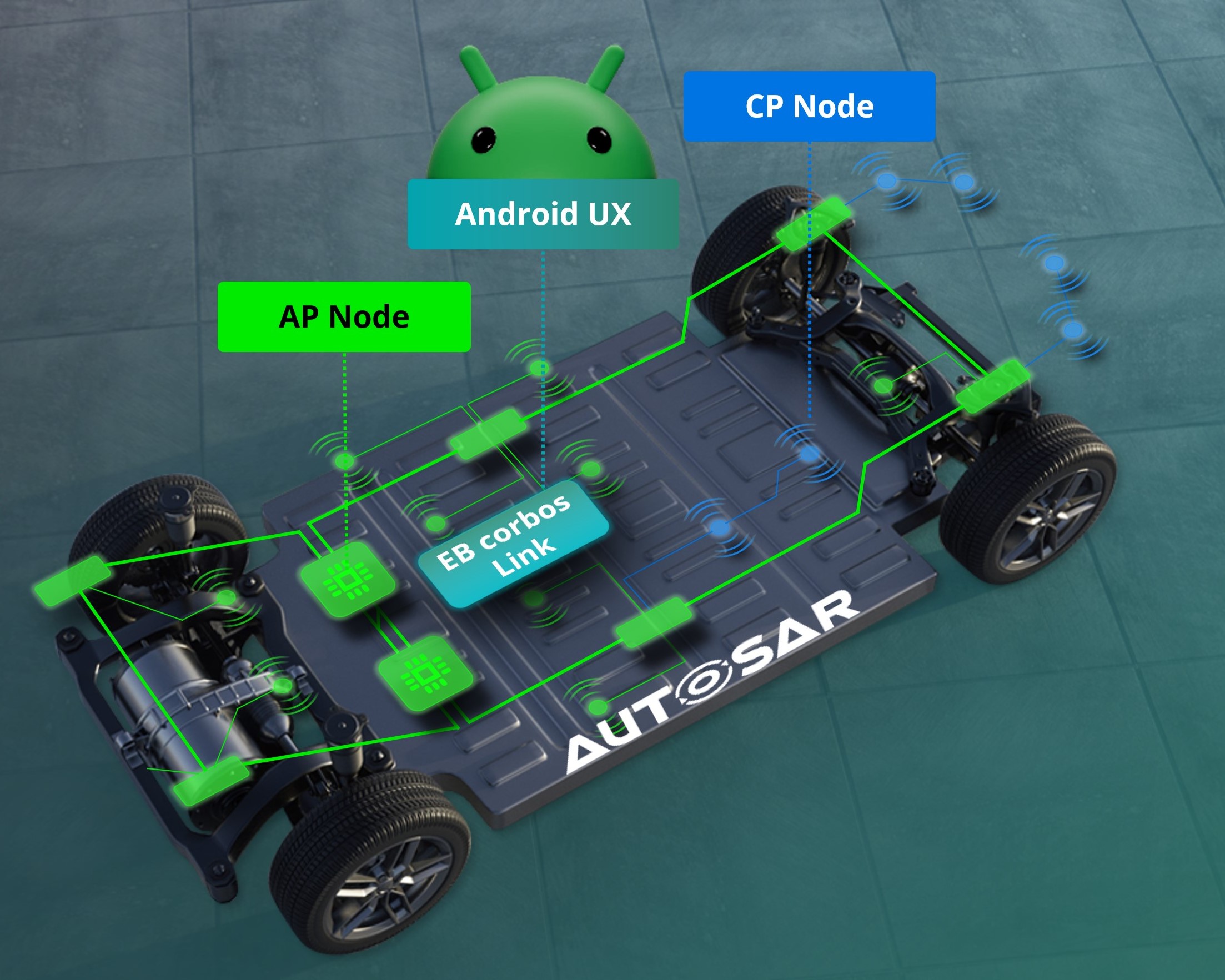
The evolution of cars from mechanical marvels to software-defined machines has brought with it unprecedented complexity. What once required a wrench now demands algorithms and robust communication frameworks.
As vehicles transform from hardware-driven machines to software-defined vehicles (SDVs), two distinct platforms – AUTOSAR and Android – are converging to redefine what’s possible in automotive innovation. Together, they are building the foundation for next-gen digital cockpits, seamless in-vehicle infotainment (IVI), and advanced software systems that can adapt to future needs.

AUTOSAR and Android in automotive
Let’s start by exploring how each contributes to the modern vehicle ecosystem.
While the focus of each are different, their integration is proving essential to SDV development. This convergence bridges safety-critical vehicle systems with cutting-edge user experiences, creating a seamless blend of innovation and reliability.
What is AUTOSAR?
AUTOSAR (AUTomotive Open System ARchitecture) sets the standards of safety-critical systems. Designed for real-time performance and standardized architecture, it ensures reliability and scalability in essential vehicle functions like braking, engine control, and advanced driver-assistance systems (ADAS).
What is Android Automotive OS (AAOS)?
Android Automotive OS, on the other hand, powers the in-vehicle experience. With its rich user interface, app ecosystem, and over-the-air (OTA) update capabilities, Android brings personalization and connectivity to the cockpit, enabling features like intuitive infotainment, seamless navigation, and smart voice assistants.
AUTOSAR: The foundation of automotive safety
AUTOSAR remains a gold standard for automotive safety and efficiency. It’s built on principles of standardization, modularity, and scalability, making it an ideal choice for developing both time-critical functions (via Classic AUTOSAR) and complex systems like ADAS and automated driving (via Adaptive AUTOSAR).
AUTOSAR benefits are clear:
- Improved software quality through robust design standards.
- Reduced development time thanks to modularity.
- Enhanced safety, ensuring vehicles meet the highest functional requirements.
AUTOSAR ensures core vehicle operations remain reliable, even as the complexity of vehicle software grows.
Android Automotive OS: Revolutionizing in-vehicle experiences
Android Automotive OS isn’t just about entertainment – It’s overhauling what drivers and passengers expect from their vehicles. Unlike Android Auto, which relies on smartphone projection, Android Automotive OS is embedded directly into the vehicle.
Strengths lie in its rich UI, app ecosystem, and connectivity options, making it a great match for modern digital cockpits. From delivering personalized music playlists to seamless navigation and app integration, it creates a dynamic and engaging in-vehicle experience. Add to this the power of OTA updates, and Android becomes a driving force for evolving software-defined vehicle experiences.
AUTOSAR meets Android Automotive OS (AAOS)
Here marks a turning point for our industry. Combining AUTOSAR’s safety-critical frameworks with Android’s user-friendly platform is a breakthrough for SDV development. The union of these technologies ensures vehicles can offer both safety and an exceptional user experience.
Key integration points include:
- Separation of concerns: AUTOSAR focuses on vehicle-critical functions like braking, while Android handles infotainment and user interface tasks.
- Communication and interoperability: Standardized communication interfaces like SOME/IP ensure smooth data exchange between AUTOSAR ECUs and Android systems.
- Virtualization: Hypervisors allow AUTOSAR and Android to run on the same hardware while maintaining isolation, ensuring both safety and flexibility.
- Service-oriented architectures (SOA): Both technologies can integrate into a service-based ecosystem, enabling dynamic interaction between vehicle systems and apps.
Use cases: Innovation in action
The convergence of AUTOSAR and Android is already making waves. Consider these examples:
- Navigation with ADAS integration: Android provides real-time maps and routing, while AUTOSAR processes sensor data to enable lane-keeping and adaptive cruise control.
- Voice-assisted control: Android handles voice recognition, seamlessly interfacing with AUTOSAR systems to adjust climate control or operate vehicle windows.
These examples highlight how the integration between AUTOSAR and Android enhances both functionality and user experience.
Paving the way for SDVs, next-gen digital cockpits, and IVI
The combined power of AUTOSAR and Android is critical for shaping the future of automotive technology. Here’s how they drive key industry trends:
- Software-defined vehicles (SDVs): By enabling modular and adaptable software systems, this integration ensures vehicles remain relevant throughout their lifecycle, with the ability to receive updates and new features.
- Next-gen digital cockpits: Android powering the infotainment experience and AUTOSAR managing critical systems, vehicles deliver a seamless, personalized, and safe driving experience.
- In-vehicle infotainment (IVI): Android transforms IVI by offering a feature-rich ecosystem, while AUTOSAR ensures that critical vehicle operations are unaffected by infotainment functions.
Addressing challenges and looking ahead
As promising as this convergence is, it’s not without challenges. Integrating two extensive software ecosystems requires mitigating hurdles like security, real-time performance on complex systems-on-chip (SoCs), and achieving safety certification. Additionally, traditional custom development often results in static integrations that are difficult to adapt. These solutions, while functional, can take months to develop – not even accounting for the time required for gathering requirements – leaving them slow and highly conditioned to specific environments.
Looking ahead, trends like advanced virtualization, standardized APIs, and more sophisticated communication protocols will continue to refine how AUTOSAR and Android work together. Future-ready solutions, such as EB corbos Link, stand out by enabling dynamic integration that can be reconfigured later to adapt to changes in hardware, software, or even evolving human needs, such as feature updates and extended support. The future is bright – and the possibilities are vast.

The Future of Automotive Software with AUTOSAR and Android
The convergence of AUTOSAR and Android is not just a technical milestone – It’s a new perspective redefining how vehicles are designed, developed, and experienced. By blending the safety-critical frameworks of AUTOSAR with the user-centric features of Android, this connection is helping spark further innovation in SDVs, digital cockpits, and in-vehicle infotainment.
As the automotive industry accelerates toward a software-defined future, this integration is setting the stage for safer, smarter, and more connected vehicles.
With Elektrobit’s out-of-the-box solution EB corbos Link, we’re leading the way in SDV development.



